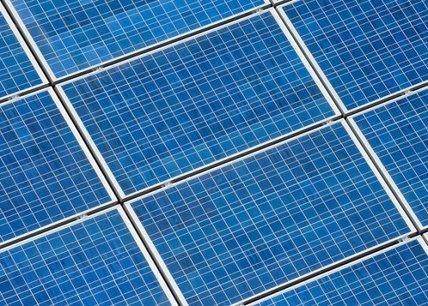Leading solar researcher Martin Green is aiming to more than double the conversion efficiencies of solar cells through a new innovative method of stacking solar cells.
According to Green, the efficiency of solar cells can be lifted from around 15 per cent boasted by most major manufacturers, to more than 30 per cent and ultimately more than 40 per cent.
This, he says, will be key to ensuring that solar technology emerges as the cheapest generation option into the future.

Green’s project, at the University of NSW, was one of 12 projects picked from a field of 110 applications for funding by the Australian Renewable Energy Agency.
ARENA will invest $21.5 million into the solar research, leveraging another $50 million from the solar industry and the private sector. UNSW won funding for three projects, the ANU five, CSIRO three, and UTS on.
Green says his project is focused on marrying two solar PV technologies – the well-established silicon-based technology that underpins most global solar manufacturing, and one of the newest, so-called perovskite technology.
By stacking the thin perovskite cells on top of standard silicon cells, Green says, the conversion efficiency can be greatly improved.
That’s because the perovskite cells can convert the blue wavelengths of sunlight, while the silicon cells convert the infra-red and red wavelengths of sunlight into electricity.
“We think we can take efficiencies from 15 per cent which is common nowadays, initially to over 30%, and ultimately more than 40 per cent,“ Green said.
“This will be one of the driver’s of affordable solar generation,” he said.
Perovskite cells have only emerged as a viable photovoltaic material over the past two years. This will be the first time a tandem, stacked approach has been attempted with silicon cells on this scale.
ARENA CEO Ivor Frischknecht said the 12 projects approved for funding will provide the foundation and infrastructure for Australia’s future energy system.
He said solar technology costs had fallen 80 per cent in recent years, and “we are convinced that the costs of solar energy will continue to dramatically decline over the next few years.”
The only storage project to get funding is from the University of Technology, where a team is looking at lithium sulfur batteries as the key to getting low-cost, large-scale battery storage to the market.
UTS believes lithium-sulfur battery technology has the potential for high energy density and low-cost large-scale energy storage and conversion. But it faces man challenges, including the insulating nature of sulfur, the limited life cycle and the high reactivity of the lithium metal anode.
The remaining projects to get funding are outlined below:











